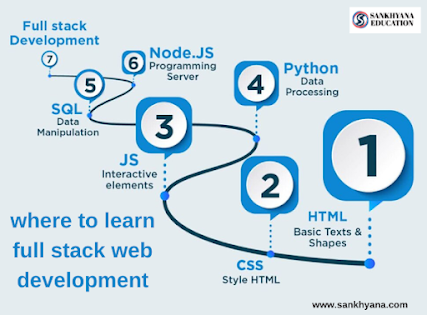Mastering Machine Learning in 5 Steps
Mastering Machine Learning in 5 Steps
Learn fundamentals, code in Python, preprocess data, explore algorithms, create projects—master machine learning's transformative power.
Introduction:
Machine Learning has emerged as a revolutionary field that has transformed industries and applications across the board. From healthcare to finance, from entertainment to e-commerce, machine learning has made its mark by enabling systems to learn from data and make intelligent decisions. If you're eager to dive into this exciting world of possibilities, you're in the right place. In this blog, we will outline five essential steps to help you master machine learning and embark on a rewarding journey of innovation and discovery.
Step 1: Lay the Foundation
Before you dive headfirst into the intricacies of machine learning algorithms, it's crucial to establish a strong foundation in the fundamentals. This includes understanding concepts like supervised learning, unsupervised learning, and reinforcement learning. Familiarize yourself with key mathematical concepts such as linear algebra, calculus, and probability, as these form the basis of many machine learning algorithms. Online courses, textbooks, and educational platforms like Coursera and Khan Academy are excellent resources to help you solidify your understanding.
Step 2: Grasp the Tools of the Trade
To effectively navigate the world of machine learning, you'll need to become proficient with the tools and programming languages commonly used in the field. Python, with its rich ecosystem of libraries such as NumPy, Pandas, and Scikit-Learn, is the go-to language for most machine learning tasks. Jupyter Notebooks provide an interactive environment for experimentation, while platforms like TensorFlow and PyTorch offer powerful frameworks for building and training neural networks. Make sure to practice hands-on coding to build your skills and confidence.
Step 3: Dive into Data Preprocessing
Data is the lifeblood of machine learning, and its quality directly influences the performance of your models. Before feeding data into algorithms, it's essential to preprocess and clean it. This involves handling missing values, normalizing features, and dealing with outliers. Exploratory Data Analysis (EDA) techniques help you gain insights into your data, and visualization tools like Matplotlib and Seaborn enable you to present your findings effectively. Remember, a well-preprocessed dataset is the first step towards accurate and reliable machine learning models.
Step 4: Master Algorithms and Model Selection
Now comes the exciting part—learning about various machine learning algorithms and selecting the right one for your task. Start with simpler algorithms like linear regression and decision trees, then gradually progress to more complex techniques like support vector machines and random forests. Understand the strengths and weaknesses of each algorithm and their suitability for different types of problems. Experiment with different algorithms and hyperparameters to fine-tune your models for optimal performance. Learning to strike the right balance between bias and variance is a key skill in this phase.
Step 5: Continuous Learning and Projects
Machine learning is a rapidly evolving field, with new techniques and advancements emerging regularly. Stay updated by reading research papers, attending conferences, and engaging in online communities like GitHub and Stack Overflow. To solidify your learning, undertake practical projects that challenge you to apply your skills to real-world problems. Whether it's image classification, natural language processing, or reinforcement learning, projects provide invaluable hands-on experience and demonstrate your capabilities to potential employers or collaborators.
Conclusion:
Mastering machine learning is a journey that requires dedication, patience, and continuous learning. By following these five steps—laying a strong foundation, mastering the tools, preprocessing data, understanding algorithms, and engaging in practical projects—you'll be well on your way to becoming a proficient machine learning practitioner. Remember, the field is vast, and each step you take brings you closer to unraveling the endless possibilities and potential that machine learning has to offer. So, roll up your sleeves, embrace the challenges, and embark on this exciting adventure of mastering machine learning.
.png)



Comments
Post a Comment